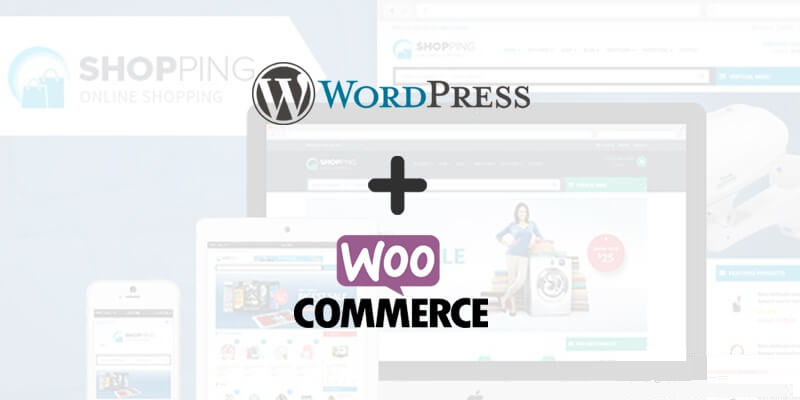By the virtue of being a
WordPress development service provider, we run into a lot of people who want to start their own online store. Being your own boss is an interesting idea. It can be rewarding, but it does have its own challenges. However, what we find most fascinating about the idea is that your revenue can be directly linked to your hard work. In this blog, we have put together information that will help newbie online entrepreneurs to create their own online store.
Why Online Selling?
Clients from around the world
outsource WordPress development to us. The reason for such increase in demand for
WordPress development service is the growing traffic in this field of business. Online shopping has gradually become more important. According to Total Retail Survey conducted by PWC in 2016, almost about 54% of shoppers purchase something online every month. 34% of all online purchases are expected to be made using a mobile phone. Therefore, it is a great idea to have an online presence. If promoted well, your store can generate a substantial revenue for your business.
Steps to Building Your Own Online Store
The following are some simple steps that will help you build an online store. The first important thing to do is to create a website. We highly recommend that you use self-hosted WordPress. The reason is that the platform is robust enough to handle a full-fledged online store. Moreover, it is easy, affordable, and customizable. All of that makes it the perfect choice.
- Hosing & Domain for Your Website: The first step in the process is get a hosting plan and a domain name registered for your website. There are multiple options in the market, and we suggest that you start with something more reasonable. Take the example of BlueHost. It provides a promotional shared hosting plan which is easy to afford. What’s more? A domain name is included with the same. Additionally, setting up the same is straightforward too. This hosting service provider has a 1-Click WordPress installation facility. That works out well for your website. If you are having the financial muscle to invest a little extra, there are premium hosting plans available in the market too. One provider that comes to mind is WPEngine. It provides a fully managed server. Additionally, there is daily backup of your website, automatic core updates for WordPress, 24/7 support, and much more. Moreover, you don’t need to separately install WordPress because it is managed WordPress hosting service. However, you will need to buy a domain name separately. You can use a service like Go Daddy to do the same.
- Secure Shopping Experience: You want your shoppers to trust you, and thus it is important to purchase an SSL certificate. SSL stands for Secure Sockets Layer. While offering our WordPress outsourcing service, we always advise our clients to get this certificate. The same reflects in your URL in the form of “https://”. The same if very easy to setup with either of the two hosting options we discussed earlier.
- Creating Store Design: Now you have your domain name and WordPress installed. It is time to work on your site’s look and user experience. There are various design options you can get with WordPress in the form of its numerous free themes. Some of these themes support Ecommerce functionality, and you will need to choose one of those. If you were to take our opinion though, we suggest that you choose a premium theme. There is high level of support available from that theme and various timely updates that you receive.
- Create an Online Store: Once your website design has been picked, it is time that you start constructing your online store. We strongly advise you to consider WooCommerce Ecommerce plugin. It is not just robust but extremely popular and completely free of cost. Additionally, it is very easy to be set-up and you can choose from various advanced add-ons. Here are some of the steps you need to follow for the creation of your online store:
- Install WooCommerce: Obviously, the first step is to install the WooCommerce plugin in your WordPress website. The plugin is easily available from WordPress.Org free plugin repository. In fact, you can also find it handy on your WP dashboard. On the dashboard, look for the option that says, ‘Plugin Items.’ After that click on ‘New Option’ and look for WooCommerce. Once you find the right plugin, hit ‘Install Now.’ This is an automatic process and should mostly happen in the blink of an eye. Now that the plugin is installed, you will need to click on ‘Activate Plugin.’ Now, you need to begin setting up and follow the on-screen prompts. You will be asked if you would like WooCommerce to automatically build some of your main Ecommerce pages. You should certainly go for that. This would automatically build such pages as customer account, shopping cart, checkout, and even your main shop page. Once that is done, you will also need to setup your store location, measurement units, shipping options, sales tax, and currency format. Lastly, you will need to consider your payment options. PayPal is one of the simplest to setup and use. All you need to do is to enter your PayPal address on the page. Plus, there are additional built-in options including online transfer, cheque, cash-on-delivery, etc. Once you have provided the necessary options, you can click on the ‘Finish’ button. Here, you will be asked if you allow WooCommerce to collect data. We advise you to decline that. Why compromise your privacy when you don’t have to?
- Advanced Settings: Now, you should return to the dashboard and work on some necessary advanced settings. Firstly, you should change the default customer address. By enabling Geolocate has the risk of slowing down your website. After that, you can work on advanced options for your shipping. You have the option of enabling Free Shipping in certain cases like with a valid code or on orders above a certain dollar value. Also check the email option. There you can change the email address where you want to receive order information.
- Add Products: This is the time for you to add your categories and products. Go to the products link in your dashboard and click on ‘Categories.’ Give your category a name, provide description for the same, and pick an image for the same. Also add tags for the category. While it is not necessary, but recommended. Now, click on ‘Products’ and then click ‘Add New.’ There is room for you to add pictures, name products, assign categories or tags, long & short description, and more. There is also the option to have a variable product. This means that there are different types of the same product. This includes different colors, sizes, types, etc.
These basic instructions should help you build your basic online store. If you would like to know more about to the process or have some information about DIT India’s team of
WordPress developers India.






